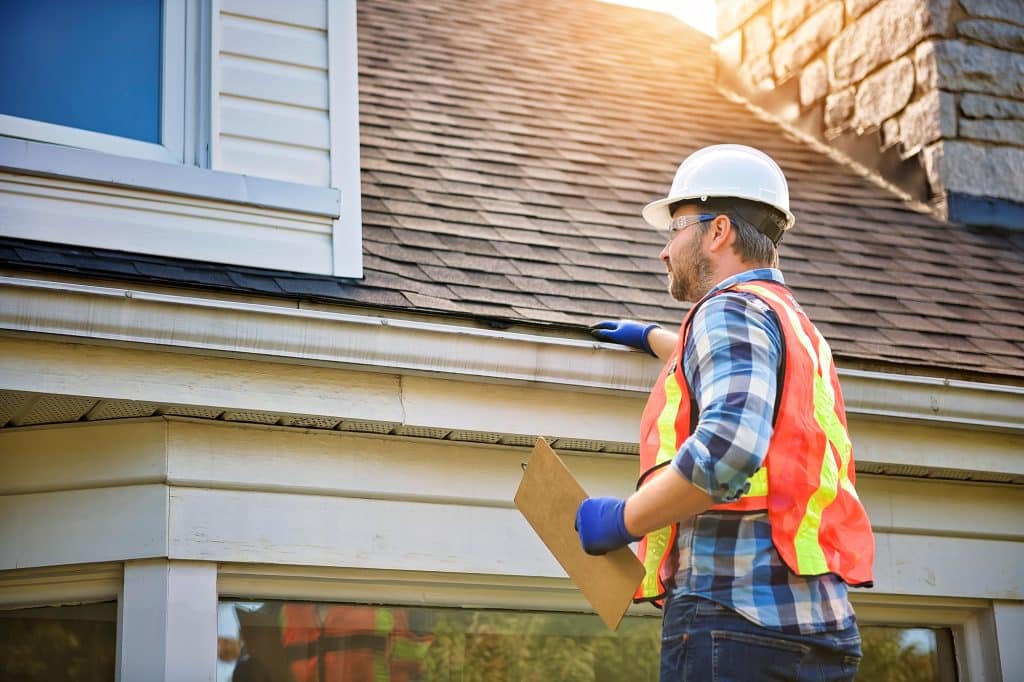The Lifecycle Of A Roof: When To Plan For Replacement
Imagine you’re cozied up on the couch on a rainy Sunday afternoon, reading your favorite book, when it suddenly starts dripping. You look up to find water stains on your ceiling. Panic sets in as you realize there might be something wrong with your roof.
But when is it time to wave goodbye to your old faithful roof and say hello to a shiny new one? Don’t worry! Today, you’ll discover the roof lifecycle and learn when to plan for a replacement. Continue reading.
Assessing and Maintaining Roofs
To ensure the longevity of your roof, it is essential to take good care of it. Hiring professional contractors saves you time and provides peace of mind. These experts have the expertise and equipment to inspect and maintain your roof effectively. They can also clean gutters, check flashing, and address minor concerns.
To locate local roof contractors, you can use search engines. If you reside in Sarasota, Florida, simply search for ‘roof replacement Sarasota’ to find reliable professionals ready to assist you.
Signs of Roof Damage or Deterioration
To assess if your roof is close to the end of its lifespan, it’s vital to identify signs of damage or deterioration. Here are three indicators to look out for:
-
Visual Signs
Visual signs can provide valuable insight into the condition of your roof. These may include cracked shingles, sagging rooflines, or daylight peeking through.
-
Leak and Moisture Issues
These issues are another telltale sign that your roof may need replacement. Watermarks on ceilings or walls and the presence of mold are clear indicators of leaks. These issues shouldn’t be ignored, as they can lead to further damage and costly repairs.
-
Age-Related Wear and Tear
These are also important considerations. A roof may experience granular loss, excessive cracking, or brittleness as it ages. These signs of aging can jeopardize your roof’s integrity and may indicate the need for replacement.
If you notice these signs, it’s best not to delay planning for a roof replacement. Ignoring these issues can cause extensive damage and put your home at risk.
Factors Affecting Roof Longevity
The longevity of your roof can be influenced by various factors, which include:
-
Weather Conditions
The temperature has a significant role in the longevity of your roof. Brutal weather like heavy rain, strong winds, or extreme heat accelerates wear and tear. It’s crucial to stay vigilant with inspections and maintenance if regions are prone to severe weather.
-
Maintenance Practices
These include routine inspections, cleaning the gutters, and addressing minor issues promptly. Regular upkeep can significantly extend the longevity of your roof.
-
Material Quality
The quality of roofing materials also plays a crucial role in your roof’s longevity. Opt for high-quality materials like asphalt shingles or metal roofing, as they can withstand the elements. When installing or replacing your roof, choosing durable and climate-suitable materials is best.
-
Installation Quality
Even the best materials can’t perform their best if not installed properly. Faulty installation can lead to premature roof failure and decrease its overall lifespan. An expert roofing contractor ensures correct and industry-compliant installation of your roof.
Being aware of these factors can empower you to make informed maintenance and replacement decisions.
Planning for Roof Replacement

At some point, every roof will need to be replaced. Here are some indicators that it’s time to start planning for a roof replacement:
-
The Age of Your Roof
Asphalt shingle roofs last for 20-25 years, while metal or tile can last longer. If your roof is reaching or has surpassed this age range, it’s time to consider a replacement.
-
Frequent Repairs
Ongoing roof repairs show that investing in a new one may be more cost-effective. Continual problems are a sign that your roof can no longer adequately protect your home.
-
Extensive Damage
If your roof has suffered damage from hailstorms or hurricanes, it may be more practical to replace it rather than continually repair it.
These signs can help you determine when to start planning for a roof replacement.
Steps in the Roof Replacement Process
Once you notice that it’s time to replace your roof, follow these nine steps:
1. Inspection and Assessment
Have a professional roofing contractor inspect your current roof to assess its condition and assess the project scope.
2. Choosing Materials
Consider durability, aesthetics, and budget when selecting materials. Seek recommendations from your contractor based on your preferences and local climate.
3. Obtaining Permits
Get the mandatory permits to ensure compliance with building codes.
4. Preparing the Site
The roofing crew will cover windows, remove obstacles, and ensure a safe work area to protect your property.
5. Tear-Off
Carefully remove shingles, underlayment, and damaged roof components to avoid structural damage.
6. Repairing Substrate
Check the roof deck for damage or decay and repair or replace it to build a solid foundation.
7. Installation
Install the new roof, underlayment, flashing, and materials according to industry standards and manufacturer guidelines.
8. Ventilation and Insulation
Ensure proper attic ventilation and install insulation for energy efficiency and indoor comfort.
9. Final Touches
Clean up the site, remove debris, and perform a final inspection for any touch-ups to ensure excellent condition.
Following these steps and working with a reputable roofing contractor will ensure smooth roof replacement.
Wrapping Up the Roofing Lifecycle
To sum it up, knowing a roof’s lifecycle and when to replace it can help you save time, money, and stress. By addressing issues promptly, you can maximize our roof’s lifespan and safeguard your investment.
So, don’t wait until you have water stains on your ceiling. Start planning for a roof replacement when the time is right.







